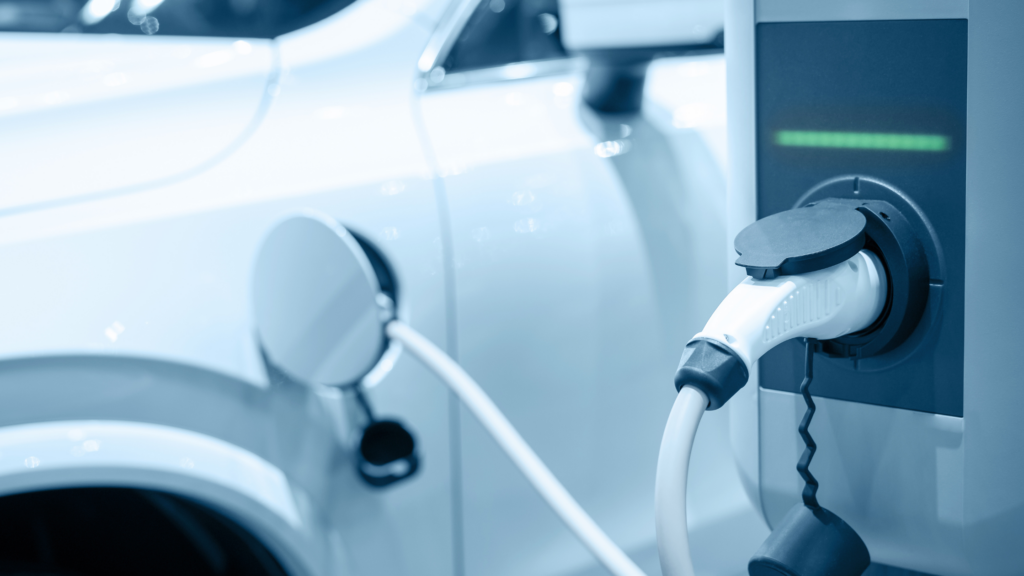Fleet Maintenance Protocols to Maximize EV Life

Despite popular belief, electric vehicles do require routine maintenance. They indeed have fewer moving parts than vehicles with internal combustion engines (ICE). As a result, they require less maintenance. But let’s be clear—EVs are far from maintenance-free. They still need regular service and preventive maintenance.
Over-wear on one system can easily cause damage in another. For example, if a cooling fan becomes blocked or malfunctions, it can impact battery life and AC induction motor powering the wheels. A weakened battery can cause the motor to overdraw on current to keep up with the driver’s foot on the accelerator.
So it’s important to keep the core components of your EVs in good repair to ensure you get the maximum life and performance from your fleet assets.
6 Maintenance Protocols for Electric Fleet Vehicles
Maintenance protocols for EVs aren’t radically different from those for ICE vehicles. You should regularly check components like batteries, brakes, fluids, and tires. Here are some recommendations to help your organization get more miles out of its EVs.
1. Set a schedule to recharge batteries.
With the right care, EV batteries will last 10 to 15 years and 100,000 to 200,000 miles. But just like rubber bands, EV batteries can wear out faster if stretched too far, too frequently.
They can wear out faster if you consistently charge them to 100% and drain them below 20% too frequently. We recommend trying to keep battery levels between 20 and 80% as often as possible, only going to a full charge or dropping below 20% on occasion.
Whether or not this is realistic depends on your drivers’ usage patterns. For long trips, it’s generally best if you charge the battery ahead of time to a full charge and then run it until it’s nearly depleted before recharging.
Whatever that care—make a plan for recharging batteries and stick to it.
2. Protect EVs from extreme heat and cold.
It’s important to keep your electric vehicles safe from extreme temperatures. Excessive heat can degrade EV batteries prematurely. Extreme cold can significantly reduce their power and range.
So if you want to maximize the efficiency your fleet can get from EVs, store and charge them in temperature-controlled facilities.
3. Conduct routine maintenance on regenerative braking systems.
Regenerative braking systems are becoming more common in electric vehicles, mainly because of the energy efficiency factor.
These systems ultimately result in reduced brake pad wear. It’s not uncommon to see brake pads on vehicles with regenerative braking systems last 100,000 miles. But that doesn’t mean the brake systems don’t need routine maintenance.
Your regenerative brake maintenance routine should follow manufacturer recommendations, and include things like:
- Clean debris from calipers and pads
- Check all hoses for cracks or wear
- Change brake fluid to prevent trapped moisture from corroding the brake system
4. Change the oil in EV gearboxes.
EV gearboxes contain moving parts just like sealed automatic transmissions in ICE vehicles. Similarly, the oil in EV gearboxes requires attention and may need to be changed at some point. How frequently depends on manufacturers’ recommendations.
Some newer electric vehicles recommend changing gearbox fluid at 80,000 miles, while others suggest intervals of 120,000 miles.
5. Remember to replace coolant.
Coolant is considered the most important fluid in electric vehicles. It helps preserve battery life and optimize its performance by keeping the battery system cool.
Coolant lasts much longer in EVs because it’s not exposed to air the way antifreeze is in ICE vehicles, but the metal tubes that contain it wear down over time. Manufacturers recommend checking and possibly replacing coolant somewhere between 80,000–120,000 miles, depending on the vehicle.
It’s important to consult the EVs’ owner manuals for coolant specifications. Using the wrong fluid can void battery warranties.
6. Keep an eye on tire maintenance.
Tires are one area you’re definitely not off the hook when it comes to routine maintenance on electric vehicles. The increased weight and torque of EVs can wear tires out 20% faster than those on your fleet’s ICE vehicles, putting their average life expectancy at 20,000–40,000 miles..
Follow these tips to maximize the life of your fleet’s EV tires:
- When equipping new tires, only use ones designed specifically for EVs.
- Regularly examine tread wear, balancing and alignment.
- Check air pressure as part of your daily vehicle inspections.
- Train drivers to avoid aggressive driving habits like rapid acceleration and abrupt braking.
Preparing Your Fleet Facilities to Service Electric Vehicles
Electric motors typically have an estimated lifespan of 15 to 20 years when operated under normal conditions. However, wear on an EV can be accelerated by excessive moisture, dirt, and dust, along with bad driving habits.
With this in mind, you may need to re-evaulate your maintenance facilities to ensure techs can service EVs without exposing them to elements that could degrade their life or performance. This podcast interview with fleet facilities expert, Norman Barrios, shares some great recommendations to future-proof your shop.
